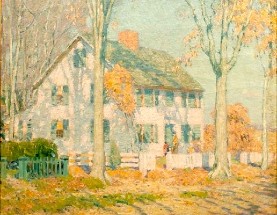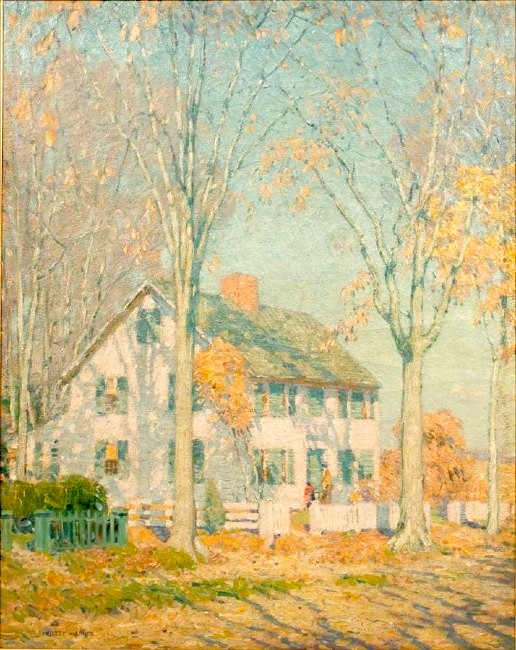
NEW YORK – A cornerstone of the American Impressionism movement was the bucolic town of Old Lyme, Connecticut, at the turn of the 20th century. Artists had long been attracted to Connecticut’s countryside with many taking the short train ride from New York City to paint en plein air (outside).
In 1899, Old Lyme (town population was just over 1,000 people) birthed an art colony that began as American painter Henry Ward Ranger traveled here to paint its landscape. Other artists soon followed. During its heyday, it was the most prominent American art colony and the first to champion Impressionism. Interestingly, Old Lyme is a coastal town but the artists associated with its art colony seldom painted water views. Instead, they preferred to depict quintessential New England views and landscapes from the town’s iconic whitewashed and steepled Congregational church to rock walls, tidy gardens and rugged barns.
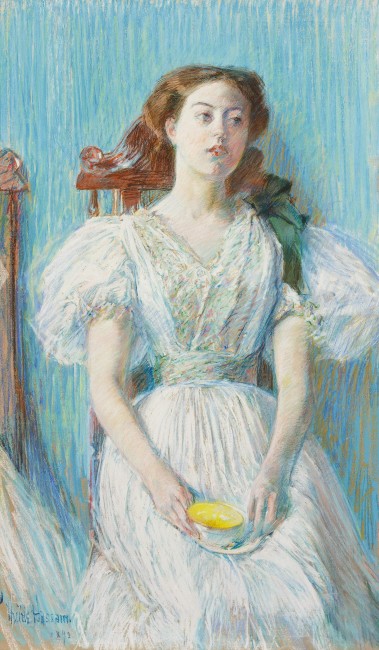
“One of the peculiar things about the Old Lyme school is despite being right on the confluence of the Long Island Sound and the Connecticut River, they still, for the most part, were drawn to the fields and meadows,” said gallerist Jeff Cooley of the Cooley Gallery in Old Lyme. “They were really taken by the atmosphere and the beauty of these stone walls, the cows and the barns.”
While the Lyme Art Association didn’t officially incorporate until 1914, its artist members – most of whom were associated with the art colony there – began showing their art in summer exhibitions at the town’s library in 1902. The association mounted its annual exhibits there to promote members and sell its work until building its own permanent gallery, which celebrats its centennial in 2021. Reportedly, the association was the first in America to build its own gallery, which debuted in 1921. Architect and member artist Charles Platt designed the building boasting natural light-filled rooms, eminently suited to displaying art. The association still exists to promote its members and its focus remains on Impressionism.
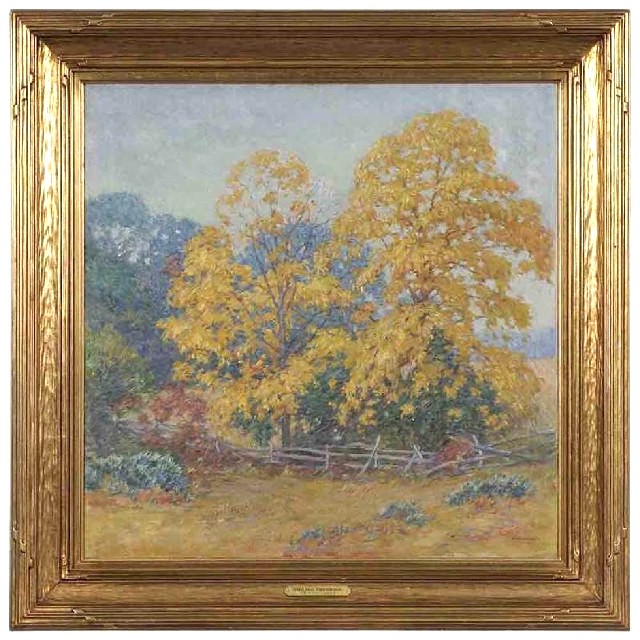
The art colony would likely not be here had it not been for one enterprising woman, Florence Ann Griswold, a ship captain’s daughter. While the Griswold name occupies notable footnotes in Connecticut’s history, her branch of the family often lived in poverty. To make ends meet, Florence and her sisters, all of whom never married, had to turn their home into a girls school and then take in boarders. Their only brother died at age 16 so it fell to the girls to keep the family afloat financially. Well educated and a gracious, gregarious hostess, “Miss Florence” and her boarding house attracted many artists, to whom she was a most ardent supporter. More than 200 artists were among her guests, between 1899 and 1937, when she died.
According to the museum named for her, the Florence Griswold Museum, she charged such low rents that she usually could not pay her bills but was a generous patron. One of the art colony’s most notable members was Willard Leroy Metcalf, whose works today have hit a record high of $545,000. Before he was famous, however, Griswold once refused to take a painting he offered her instead of rent as she thought it was his best work. That painting, May Night, kickstarted his career.
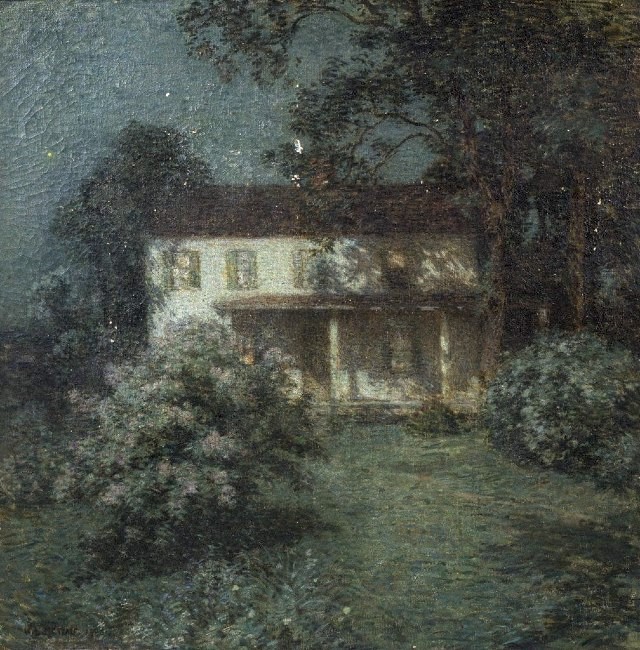
Amy Kurtz Lansing, the Florence Griswold Museum’s curator, says the legacy of the Old Lyme Art Colony lies in its commitment to working en plein air and to representing nature and history in art. “It really is one of the most important American art colonies. Its members were people who had been parts of other colonies but they created something in Old Lyme in part because they founded the Lyme Art Association there that really gave permanence to their efforts,” she said. “They really created a lasting legacy … They helped shape what we think of as American Impressionism.”
From depictions of rocky ledges to old-fashioned gardens and quaint houses, a common theme in the Old Lyme artists is this regional sensibility to depicting New England village life and its history. “They are really distilling the essence of New England and its landscapes,” Lansing said.
Metcalf and Childe Hassam are the two best-known and best-selling artists of the art colony. Hassam, who arrived in Old Lyme in the summer of 1903, described it as “a pretty fine old town” in a letter to his friend and fellow artist, J. Alden Weir. As figureheads of sorts for the colony, the two usually command the biggest prices at auction for their paintings even though there are many other equally talented artists here.
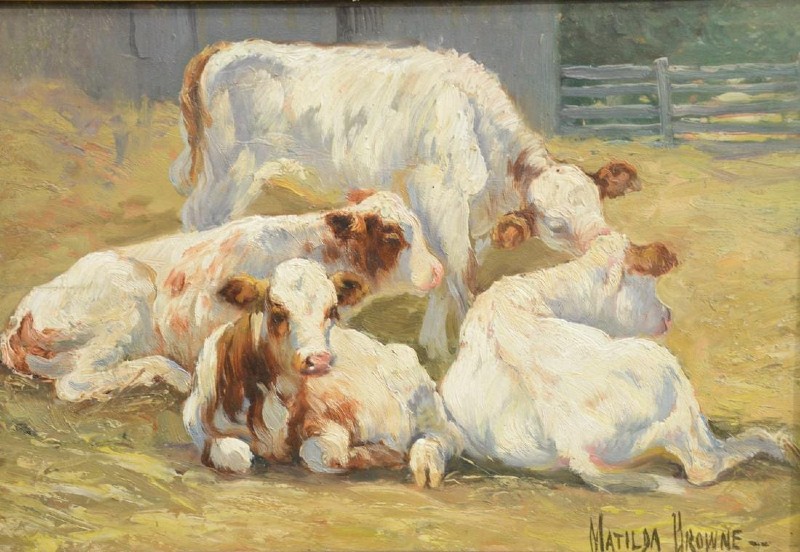
“The interesting thing about the colony is there are several dozen really talented artists, who at their best could certainly paint as well as those two guys, but who will never sort of be on the same level from a critical acclaim standpoint or certainly from a market standpoint,” Cooley said. “Their work is as dedicated and sincere and often as good as the major figures but whose values are substantially lower.”
Standouts among this group from the colony include William Chadwick, Frank McNell, and Matilda Brown, he said. “The list goes on … Clark Voorhees, William S. Robinson and Allen Butler Talcott … ”
As with most things that are collected, the market has ups and downs but private and institutional collectors still seek these artists out. “There are the vicissitudes of the highs and lows of the market but the good thing is they continue to be noted and appreciated for painting the beauty of the Connecticut landscape and painting it beautifully,” Cooley said.


